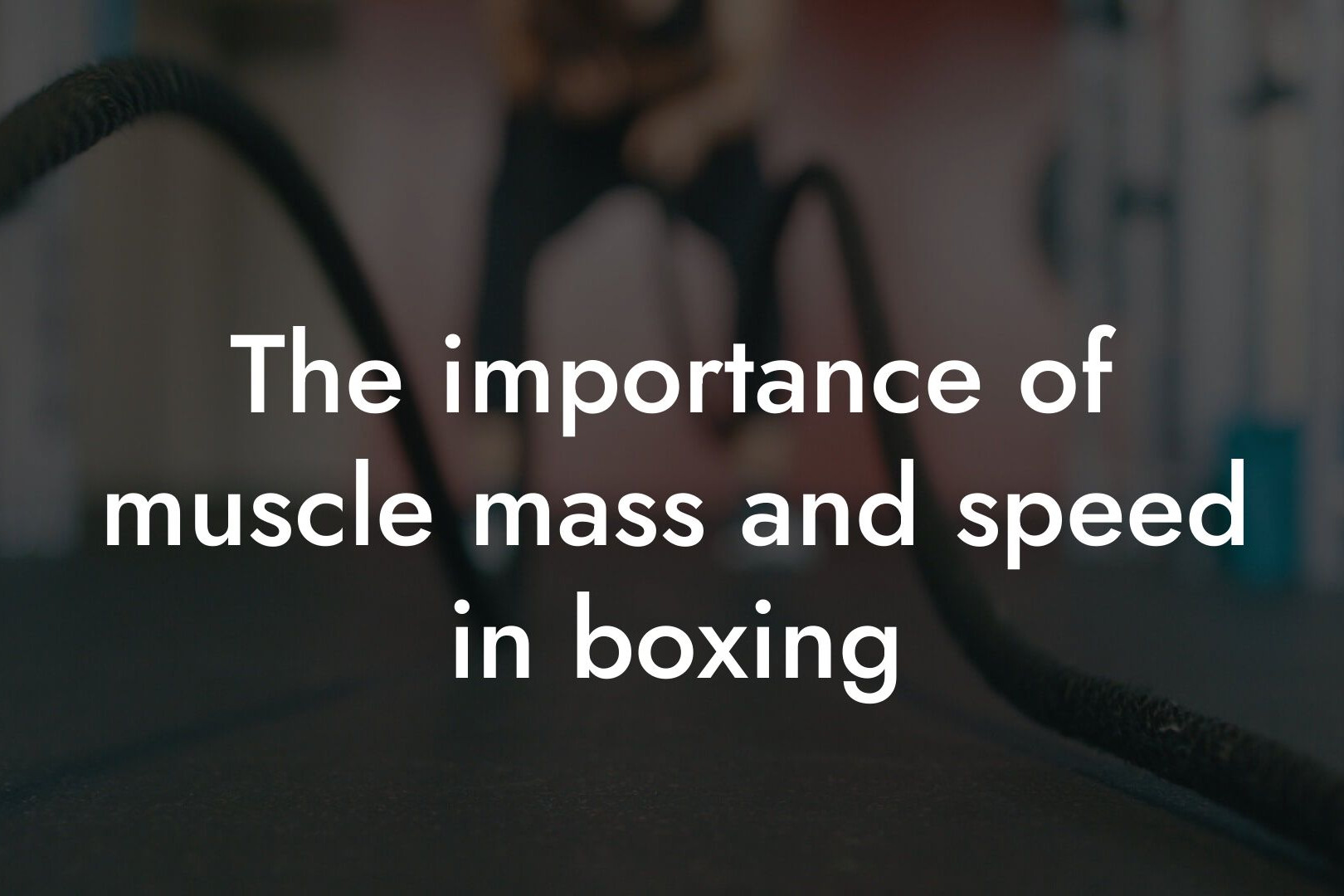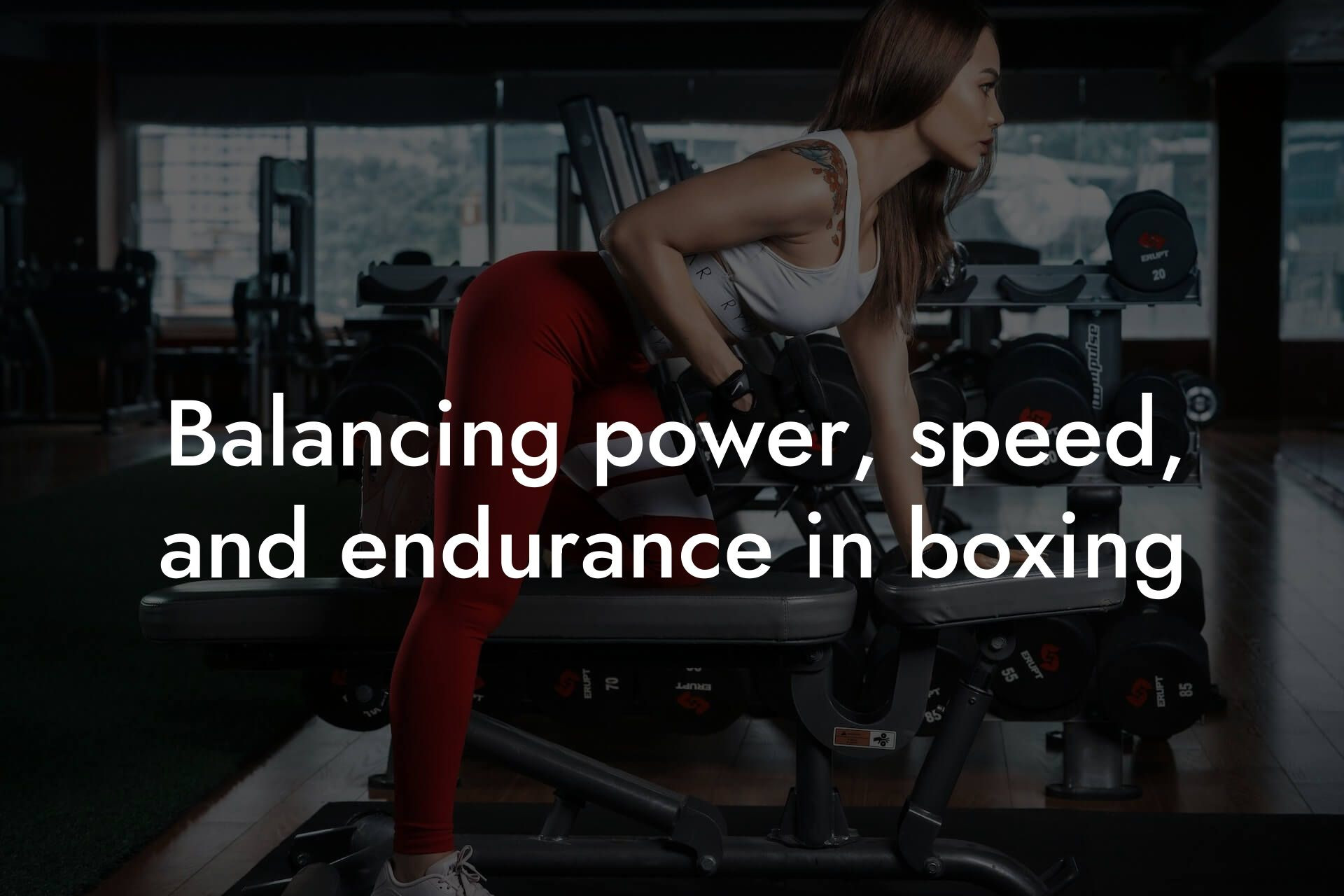As a boxer, you know that sparring is an essential part of your training regimen. It allows you to test your skills, build endurance, and prepare for the physical demands of competition. However, the intense physical activity involved in sparring can take a toll on your body, leaving you feeling fatigued, sore, and in need of recovery. At Tano Performance Group, we understand the importance of proper recovery strategies for boxers after sparring sessions. In this article, we'll explore the best practices to help you bounce back from a grueling sparring session and get back to your training routine.
Table of Contents
Why Recovery is Crucial for Boxers
Recovery is a critical component of any training program, and for boxers, it's especially important. The physical demands of boxing are intense, and if you don't allow your body time to recover, you risk injury, fatigue, and decreased performance. When you don't recover properly, you may experience:
- Decreased strength and endurance
- Increased risk of injury
- Impaired immune function
- Poor sleep quality
- Decreased motivation and mental focus
By incorporating effective recovery strategies into your training routine, you can minimize the risk of these negative consequences and optimize your performance in the ring.
Immediate Post-Sparring Recovery
Immediately after a sparring session, your body is in a state of heightened inflammation and stress. It's essential to take steps to reduce this inflammation and promote recovery. Here are some immediate post-sparring recovery strategies to implement:
- Stretching: Take 10-15 minutes to stretch your major muscle groups, focusing on your shoulders, arms, legs, and back.
- Hydration: Drink 16-20 ounces of water or a sports drink to replenish lost fluids and electrolytes.
- Cool-down: Engage in 10-15 minutes of light cardio, such as jogging or jumping rope, to gradually bring your heart rate and breathing back to normal.
- Compression Garments: Wear compression clothing, such as tights or sleeves, to improve blood flow and reduce muscle soreness.
Nutrition and Supplementation
Nutrition plays a critical role in the recovery process. After a sparring session, your body needs the right fuel to repair and rebuild damaged tissues. Here are some nutritional strategies to implement:
- Protein: Consume 20-30 grams of protein within 30-60 minutes after sparring to promote muscle repair and growth.
- Carbohydrates: Eat complex carbohydrates, such as whole grains, fruits, and vegetables, to replenish energy stores.
- Healthy Fats: Include sources of healthy fats, such as nuts, seeds, and avocados, in your post-sparring meal.
- Antioxidants: Consume antioxidant-rich foods, such as berries, leafy greens, and other fruits and vegetables, to reduce inflammation.
- Supplements: Consider adding supplements, such as protein powder, creatine, and omega-3 fatty acids, to your recovery routine.
Rest and Sleep
Rest and sleep are essential components of the recovery process. During sleep, your body repairs and rebuilds damaged tissues, and a lack of quality sleep can impede recovery. Here are some strategies to improve rest and sleep:
- Aim for 7-9 hours of sleep each night.
- Establish a consistent sleep schedule.
- Create a relaxing bedtime routine, such as reading or meditation.
- Avoid caffeine and electronics before bedtime.
- Incorporate power naps, such as 20-30 minute naps, into your daily routine.
Active Recovery Techniques
Active recovery techniques can help promote blood flow, reduce muscle soreness, and improve overall recovery. Here are some active recovery techniques to try:
- Foam Rolling: Use a foam roller to massage out tight muscles and improve circulation.
- Self-Myofascial Release: Use tools, such as lacrosse balls or tennis balls, to release tension in your muscles.
- Contrast Showers: Alternate between hot and cold water to reduce inflammation and improve circulation.
- Massage: Treat yourself to a professional massage or have a partner or friend massage out your tight muscles.
Mental Recovery Strategies
Mental recovery is just as important as physical recovery. Here are some strategies to help you recover mentally:
- Meditation: Practice mindfulness meditation to reduce stress and improve focus.
- Visualization: Visualize yourself performing well in the ring to improve confidence and mental toughness.
- Positive Self-Talk: Practice positive affirmations to improve mood and motivation.
- Time Off: Take time off from training to relax and recharge.
DEXA Scanning for Optimal Recovery
At Tano Performance Group, we understand the importance of optimal recovery for boxers. That's why we recommend incorporating DEXA scanning into your recovery routine. DEXA scanning provides a comprehensive body assessment, including body fat percentage, bone density, and lean mass. With this information, you can tailor your recovery strategies to your specific needs and optimize your performance in the ring.
By incorporating these recovery strategies into your training routine, you can minimize the risk of injury, improve your performance, and reach your goals in the ring. Remember, recovery is not just about resting – it's about actively working to improve your physical and mental well-being. At Tano Performance Group, we're committed to helping you achieve optimal recovery and performance.
Frequently Asked Questions
What is the importance of recovery strategies for boxers after sparring sessions?
Recovery strategies are crucial for boxers after sparring sessions as they help to repair and rebuild muscles, replenish energy stores, and reduce muscle soreness and fatigue. This enables boxers to perform at their best during subsequent training sessions and competitions. Proper recovery also reduces the risk of injury and illness, allowing boxers to maintain a consistent and intense training regimen.
What are the common signs of inadequate recovery in boxers?
Common signs of inadequate recovery in boxers include persistent muscle soreness, fatigue, decreased performance, increased risk of injury, and mood disturbances such as irritability and anxiety. If left unaddressed, inadequate recovery can lead to overtraining, burnout, and decreased overall performance.
How soon after a sparring session should a boxer start their recovery routine?
It's recommended that boxers start their recovery routine within 30-60 minutes after a sparring session. This allows for the most effective replenishment of energy stores, reduction of muscle soreness, and promotion of muscle repair.
What are the key components of a effective recovery routine for boxers?
A effective recovery routine for boxers should include a combination of the following components: nutrition and hydration, stretching and foam rolling, compression garments and ice baths, active recovery techniques such as light cardio and strength training, and adequate rest and sleep.
What types of foods should boxers consume during their recovery routine?
Boxers should consume foods that are high in protein, complex carbohydrates, and healthy fats to help promote muscle repair and replenish energy stores. Examples of ideal recovery foods include lean meats, fish, eggs, whole grains, fruits, and vegetables.
How much water should a boxer drink during their recovery routine?
Boxers should aim to drink at least 16-20 ounces of water for every pound of body weight lost during a sparring session. This helps to replenish lost fluids and electrolytes, reducing the risk of dehydration and muscle cramping.
What is the role of stretching and foam rolling in a boxer's recovery routine?
Stretching and foam rolling help to reduce muscle soreness and improve flexibility, allowing boxers to move more efficiently and effectively during subsequent training sessions. They also help to promote blood flow and reduce muscle tension, promoting faster recovery.
How often should a boxer use compression garments and ice baths during their recovery routine?
Compression garments and ice baths can be used 2-3 times per week, or as needed, to help reduce muscle soreness and inflammation. They can be especially beneficial after intense or high-volume training sessions.
What are active recovery techniques and how do they benefit boxers?
Active recovery techniques, such as light cardio and strength training, help to promote blood flow and reduce muscle soreness without exacerbating fatigue. They can be used 1-2 times per week, or as needed, to help boxers recover from intense training sessions.
How much rest and sleep do boxers need during their recovery routine?
Boxers need 7-9 hours of sleep per night and 1-2 rest days per week to allow for adequate recovery. This helps to replenish energy stores, repair muscles, and reduce the risk of overtraining and burnout.
Can boxers use supplements to aid in their recovery routine?
Yes, boxers can use supplements such as protein powder, creatine, and branched-chain amino acids (BCAAs) to aid in their recovery routine. However, it's essential to consult with a healthcare professional or registered dietitian to ensure safe and effective use.
How long does it take for a boxer to fully recover from a sparring session?
The time it takes for a boxer to fully recover from a sparring session can vary depending on factors such as the intensity and duration of the session, as well as the individual's overall fitness level and recovery strategies. However, with a well-structured recovery routine, boxers can typically expect to feel fully recovered within 2-5 days.
Can boxers train during their recovery routine?
Yes, boxers can train during their recovery routine, but it's essential to modify the intensity and volume of their training to avoid exacerbating fatigue and muscle soreness. Active recovery techniques, such as light cardio and strength training, can be used to promote recovery while still allowing for some level of training.
How can boxers monitor their recovery progress?
Boxers can monitor their recovery progress by tracking their heart rate, muscle soreness, and performance during training sessions. They can also use subjective measures such as mood and energy levels to assess their overall recovery.
What are the benefits of working with a coach or trainer during a boxer's recovery routine?
Working with a coach or trainer can help boxers develop a personalized recovery routine, provide guidance on proper nutrition and hydration, and offer support and motivation during the recovery process.
Can boxers use technology, such as wearable devices, to aid in their recovery routine?
Yes, boxers can use technology, such as wearable devices, to track their heart rate, sleep, and other physiological markers during their recovery routine. This can provide valuable insights into their recovery progress and help them make data-driven decisions.
How can boxers avoid overtraining and burnout during their recovery routine?
Boxers can avoid overtraining and burnout by listening to their bodies, modifying their training and recovery routines as needed, and prioritizing rest and recovery. It's also essential to set realistic goals and avoid pushing themselves too hard, too quickly.
What are the consequences of inadequate recovery in boxers?
Inadequate recovery can lead to a range of consequences, including decreased performance, increased risk of injury and illness, and burnout. It can also negatively impact a boxer's mental health and overall well-being.
How can boxers incorporate recovery strategies into their daily routine?
Boxers can incorporate recovery strategies into their daily routine by prioritizing rest and recovery, making healthy nutrition and hydration choices, and incorporating stretching, foam rolling, and active recovery techniques into their daily routine.
What are the benefits of recovery strategies for boxers beyond improved performance?
Beyond improved performance, recovery strategies can also help boxers reduce their risk of injury and illness, improve their overall health and well-being, and enhance their mental toughness and resilience.
How can boxers adapt their recovery routine to accommodate changes in their training schedule?
Boxers can adapt their recovery routine to accommodate changes in their training schedule by modifying the intensity and volume of their recovery strategies, prioritizing rest and recovery during periods of high-volume training, and incorporating active recovery techniques during periods of low-volume training.
What are the key differences between recovery strategies for boxers and other athletes?
The key differences between recovery strategies for boxers and other athletes lie in the specific demands of the sport, including the high-intensity and high-impact nature of boxing. Boxers require a unique combination of recovery strategies that address their specific needs and goals.
Here are some related articles you might love...
- The importance of muscle mass and speed in boxing
- Bone density and injury prevention in boxing
- Balancing power, speed, and endurance in boxing
- Strength and conditioning programs for amateur boxers
- Reducing body fat for optimal weight class in boxing
- Nutrition tips for maintaining energy and muscle in boxing
- How body composition affects performance in boxing
- Off-season training for amateur boxers
- The role of DEXA scans in boxing training and weight management
Zak Faulkner
Zak Faulkner is a leading authority in the realm of physical health and body composition analysis, with over 15 years of experience helping professionals optimise their fitness and well-being. As one the experts behind Tano Performance Group, Zak has dedicated his career to providing in-depth, science-backed insights that empower clients to elevate their physical performance and overall health.
With extensive knowledge of DEXA technology, Zak specializes in delivering comprehensive body assessments that offer precise data on body fat, muscle mass, bone density, and overall physique. His expertise enables individuals to make informed decisions and achieve their fitness goals with accuracy and confidence. Zak’s approach is rooted in a deep understanding of human physiology, combined with a passion for helping clients unlock their full potential through personalised strategies.
Over the years, Zak has earned a reputation for his commitment to excellence, precision, and client-focused service. His guidance is trusted by top professionals who demand the best when it comes to their health. Whether advising on fitness programs, nutritional strategies, or long-term wellness plans, Zak Faulkner’s insights are a valuable resource for anyone serious about taking their health and fitness to the next level.
At Tano Performance Group, Zak continues to lead our Content Team revolutionising how professionals approach their physical health, offering unparalleled expertise that drives real results.




